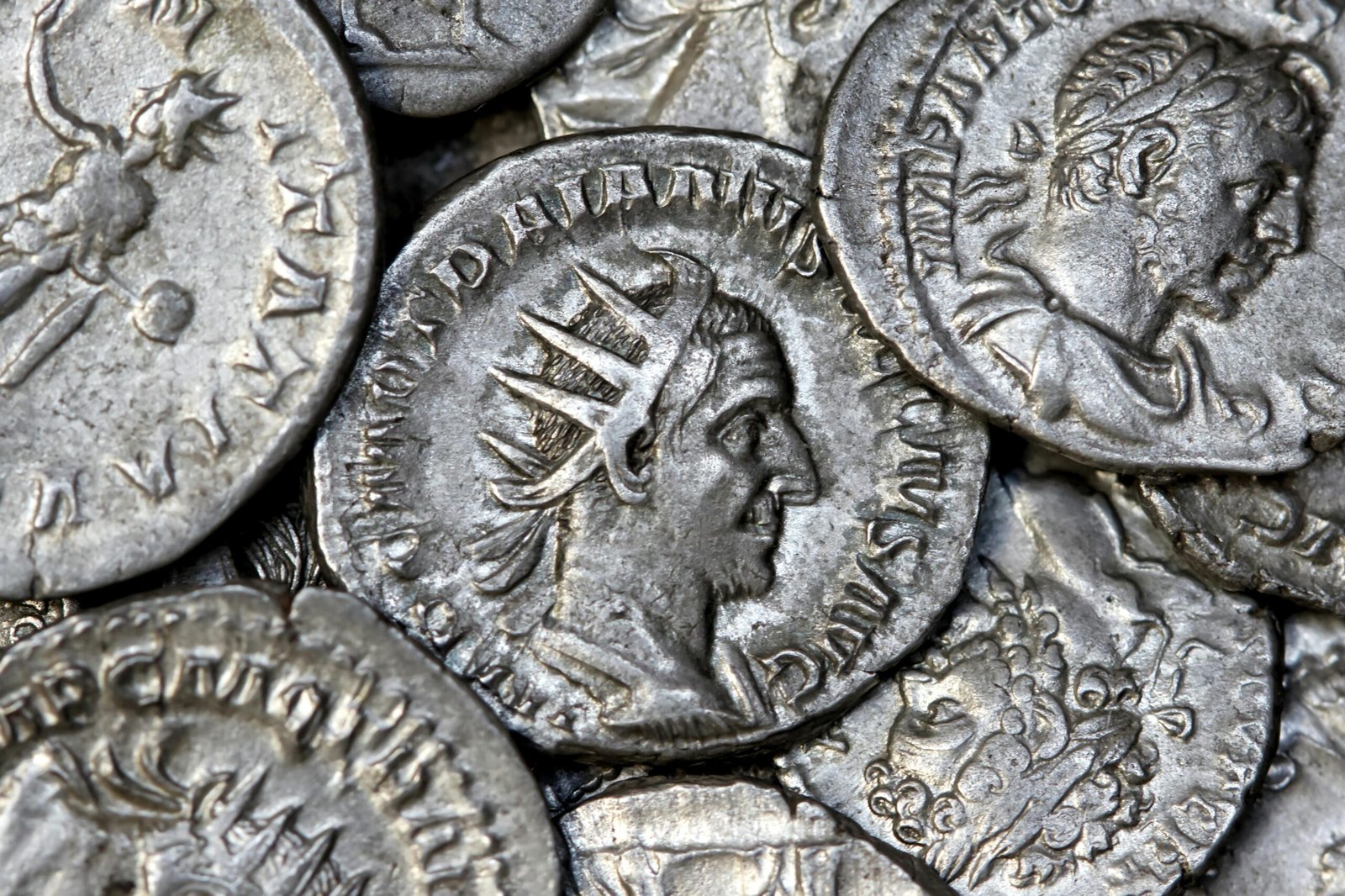
Evolution of Roman Coinage
The Evolution of Roman Coinage: From Republic to Empire
Introduction Roman coinage is a crucial historical record, reflecting the economic, political, and cultural transformations of ancient Rome. From the early cast bronze coins of the Republic to the gold and silver currency of the Empire, Roman coinage evolved to meet the changing needs of the state. This article explores the different phases of Roman coinage, their significance, and the factors that influenced their development.
1. Early Roman Coinage (4th–3rd Century BCE)
Aes Rude and Aes Signatum Before the introduction of standardized coinage, the Romans used raw lumps of bronze called aes rude. These irregular pieces were traded based on weight. By the 5th century BCE, aes signatum emerged—large cast bronze bars stamped with designs to verify their authenticity.
Introduction of Aes Grave In the late 4th century BCE, Rome introduced the aes grave, heavy cast bronze coins with standardized denominations. These coins featured various deities, such as Janus and Jupiter, and were the first attempt at a structured monetary system.
2. The Roman Republic (3rd–1st Century BCE)
The First Silver Denarius (c. 211 BCE) During the Second Punic War (218–201 BCE), Rome introduced the silver denarius, which became the backbone of the Roman monetary system for centuries. Featuring deities like Roma and Jupiter, the denarius helped unify trade and finance across Roman territories.
Expansion of Roman Coinage As Rome expanded, new coins were minted to accommodate different regions. The sestertius (bronze), quinarius (silver), and aureus (gold) were introduced, allowing for a diverse monetary system that facilitated trade with other civilizations.
Coinage as Political Propaganda By the late Republic, powerful generals and politicians, such as Julius Caesar, used coinage to promote their achievements. Caesar’s coins famously bore his own image—an unprecedented move that foreshadowed the imperial use of portraiture on coinage.
3. The Roman Empire (1st–3rd Century CE)
Augustus and the Standardization of Coinage With the establishment of the Roman Empire under Augustus (27 BCE–14 CE), the monetary system became more centralized. The aureus (gold), denarius (silver), sestertius (bronze), and as (copper) were systematically issued, solidifying a standard monetary structure.
Iconography and Imperial Messaging Emperors increasingly used coins to communicate their legitimacy and accomplishments. Coins featured portraits of emperors, symbols of military victories, and representations of deities such as Mars and Venus.
Economic Challenges and Currency Debasement From the 2nd century CE onwards, economic difficulties led to the debasement of silver coinage. Under Emperor Caracalla (198–217 CE), the antoninianus was introduced—initially a double denarius, but it rapidly lost its silver content due to inflation.
4. The Late Roman Empire and Reforms (3rd–5th Century CE)
The Crisis of the Third Century and Monetary Instability The 3rd century CE saw political turmoil, leading to frequent changes in emperors and rampant inflation. Coinage became increasingly debased, and the economy suffered.
Diocletian’s Monetary Reforms (c. 294 CE) Emperor Diocletian (284–305 CE) attempted to stabilize the economy by introducing the nummus, a large bronze coin, and strengthening the gold aureus. He also implemented price controls, but these measures had limited success.
Constantine and the Introduction of the Solidus (c. 312 CE) Constantine the Great (306–337 CE) introduced the solidus, a high-purity gold coin that became the standard for Byzantine currency for centuries. This marked a shift toward a more stable monetary system.
Conclusion The evolution of Roman coinage mirrors the rise and fall of Rome itself. From humble bronze lumps to sophisticated gold coinage, the Roman monetary system reflected the empire’s political and economic shifts. Today, these coins provide invaluable insights into the history, economy, and propaganda of one of history’s greatest civilizations.
Leave a Reply